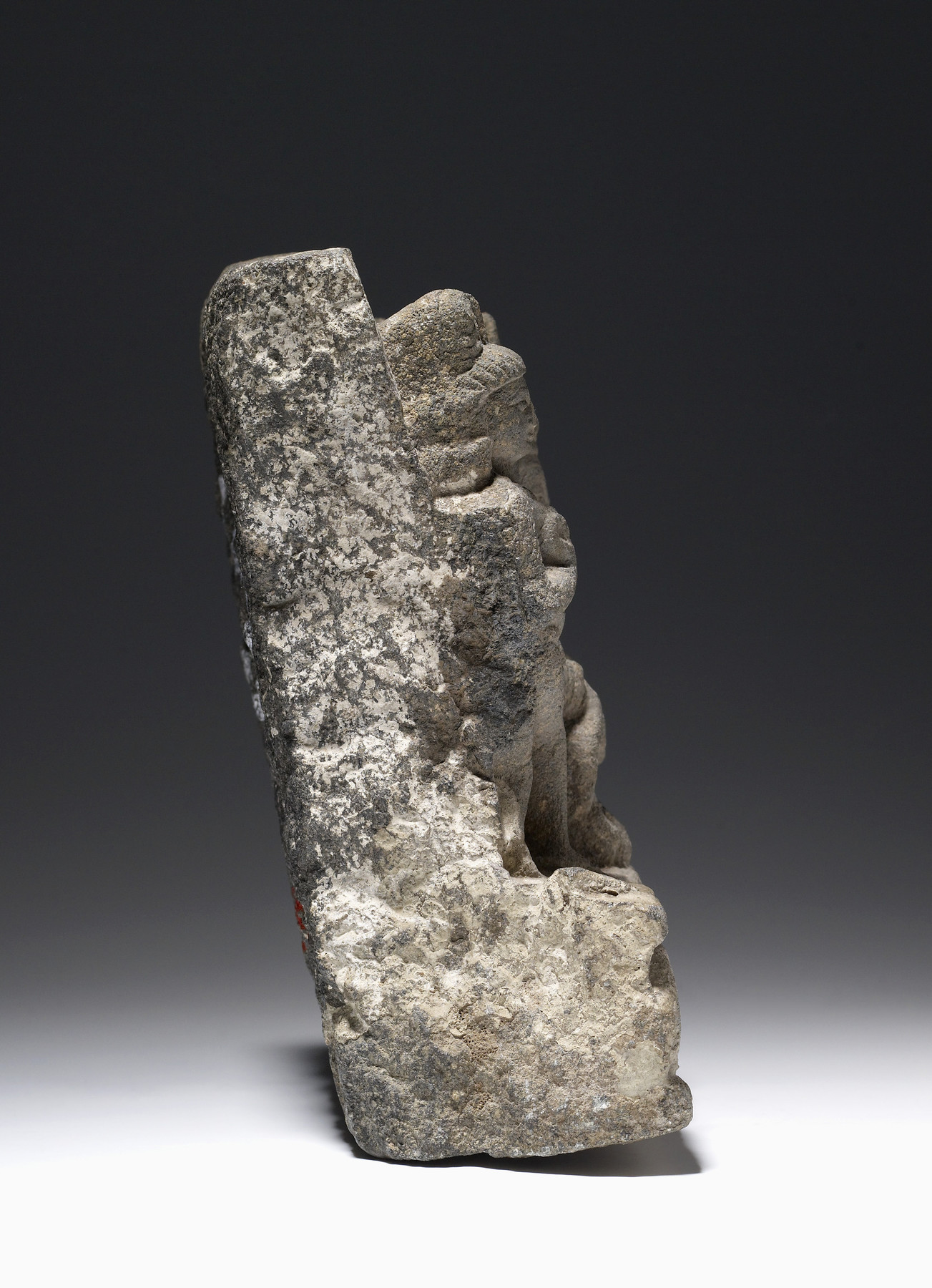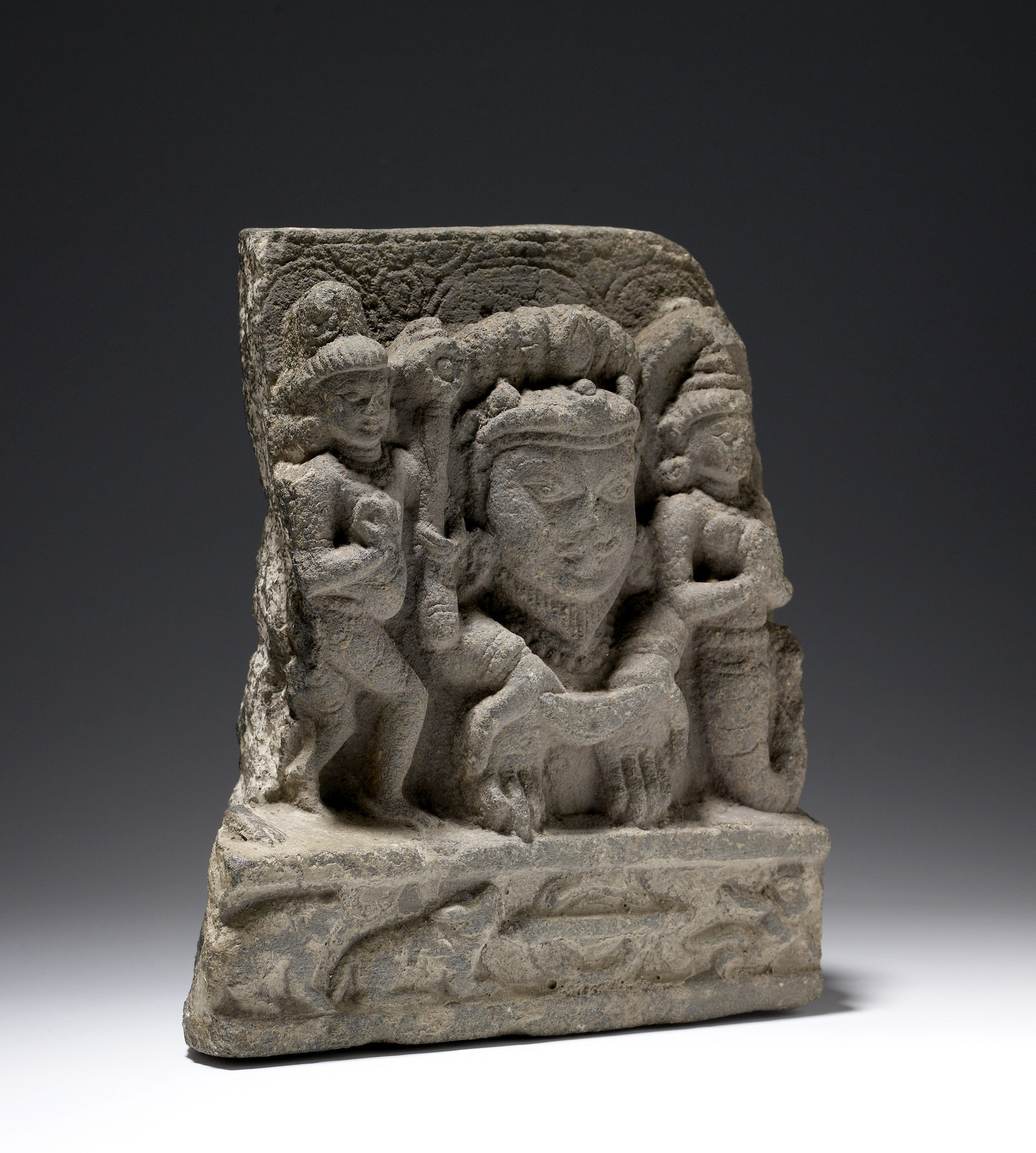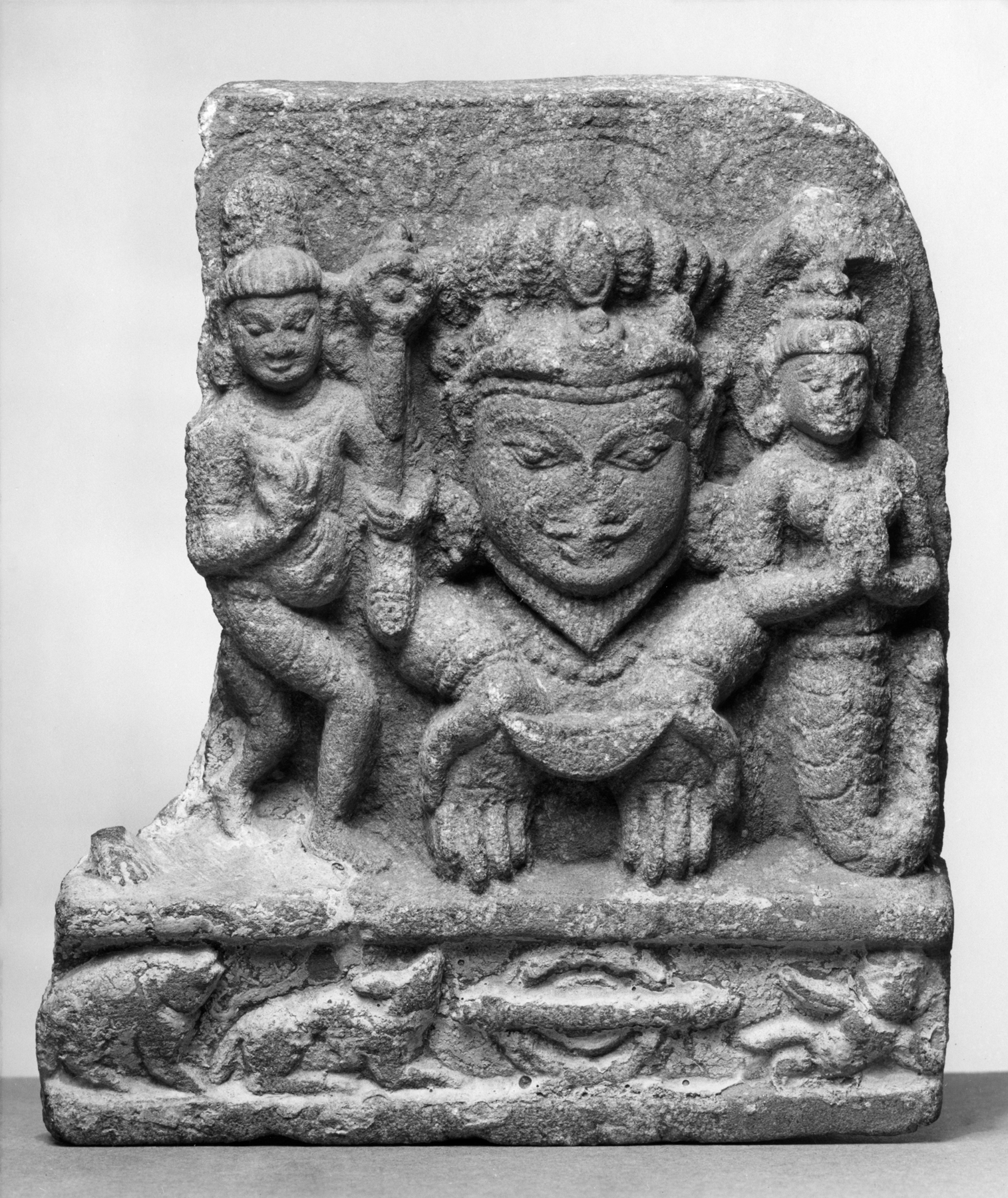Planetary Deities Shani, Rahu, and Ketu
The figures on this fragmentary sculptural relief are three of the nine planetary deities, or "navagrahas," of Indian astrology. Believed to influence one's wellbeing ("graha" means "seizing" as well as "planet" and "eclipse"), the navagrahas are worshiped to prevent danger or disease. They also serve a protective function and are sometimes placed above the doorways to temples; this fragment once belonged to such a lintel. Though considered planetary deities, the navagrahas constitute a range of celestial bodies. Included in the nine ("nava") are the sun, the moon, Mars, Mercury, Jupiter, Venus, Saturn, and the two positions in the sky where the moon and the sun cross paths, causing an eclipse. The figures seen here represent the last three, considered to be the least auspicious. On the left is Shani, Saturn, holding a club. Rahu, in the middle, and Ketu, on the right, are both associated with eclipses. According to some traditions, they were both once part of the body of a demon that was cut in half as punishment for troubling the gods. The upper half became Rahu, who has a particularly large head and holds the portion of the sun that is visible during an eclipse. The lower half became Ketu, who is represented with the body of a snake. Below the deities are their vehicles: Shani's buffalo, Rahu's chariot wheels, and what appears to be a bird for Ketu. To the left of the buffalo is a frog, vehicle of the deity Shukra (Venus).
Provenance
Provenance (from the French provenir, 'to come from/forth') is the chronology of the ownership, custody, or location of a historical object. Learn more about provenance at the Walters.
Baroness Helen Giskra, Baltimore [date and mode of acquisition unknown]; Walters Art Museum, 1949, by gift.
Geographies
India (Place of Origin)
Measurements
H: 7 1/2 x W: 6 1/2 x D: 2 7/8 in. (19 x 16.5 x 7.3 cm)
Credit Line
Gift of the Baroness Helen Giskra, 1949
Accession Number
In libraries, galleries, museums, and archives, an accession number is a unique identifier assigned to each object in the collection.
In libraries, galleries, museums, and archives, an accession number is a unique identifier assigned to each object in the collection.
25.39














